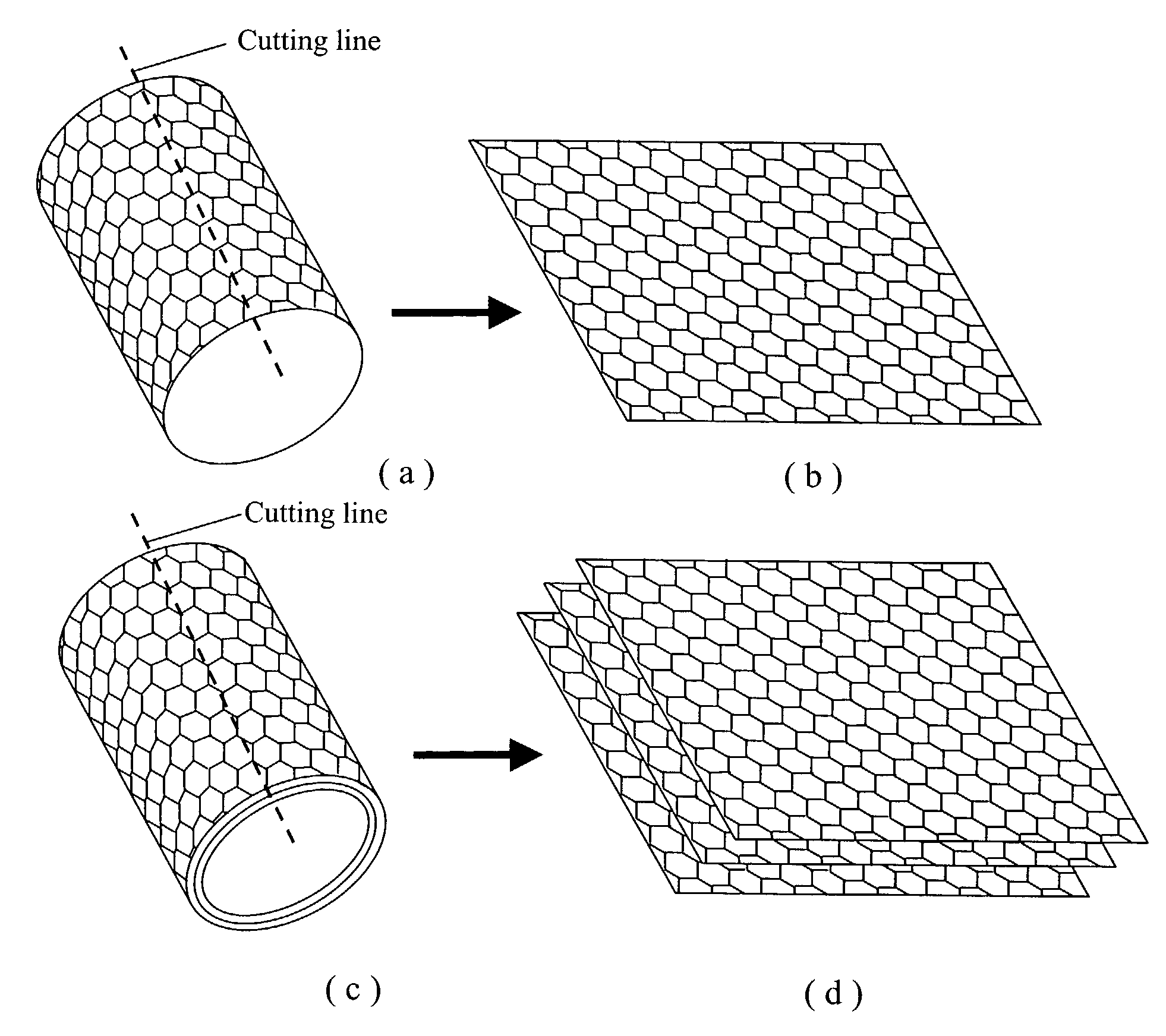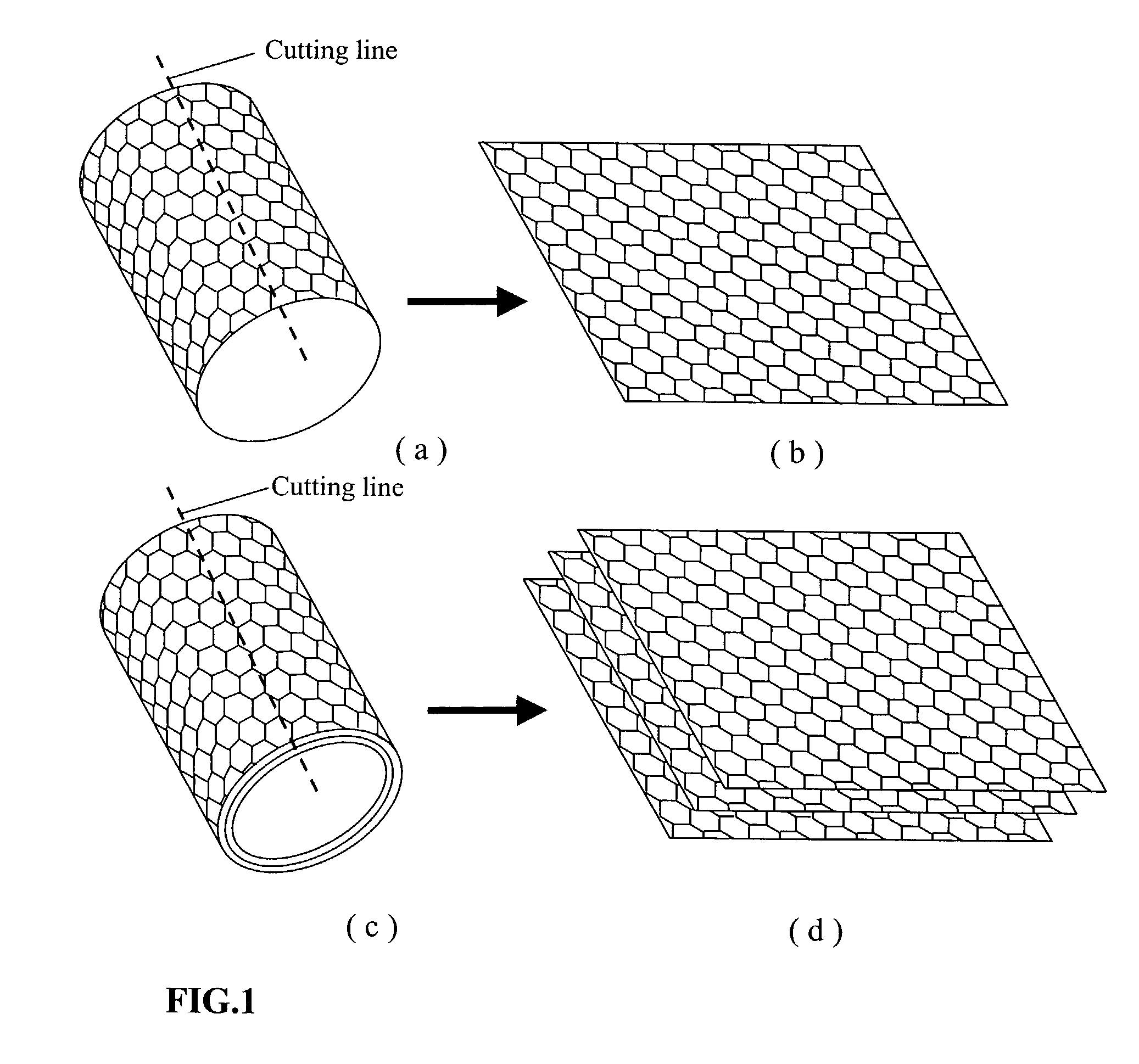Nano-scaled graphene plates
a graphene plate and nanoscale technology, applied in the field of nanoscaled thin plate carbon material, can solve the problems of increasing cost, complicated, slow and expensive purification process, and only about 15% yield of pure carbon nanotubes with respect to the end product, so as to achieve wide property range, reduce cost, and facilitate processing
- Summary
- Abstract
- Description
- Claims
- Application Information
AI Technical Summary
Benefits of technology
Problems solved by technology
Method used
Image
Examples
example 1
[0037]One hundred grams of polymeric carbon, prepared by oxidation of PAN fibers at 250° C. and partial carbonization of the oxidized PAN at 500° C., were treated in a mixture of sulfuric and nitric acids at concentrations to yield the desired intercalation compound. The product was water washed and dried to approximately 1% by weight water. The dried fibers were introduced into a furnace at 1,250° C. to effect extremely rapid and high expansions of nano-scaled graphite crystallites. The exfoliated carbon sample, chopped into a short fiber form (<1 mm length), was then ball-milled in a high-energy plenary ball mill machine for 24 hours to produce nano-scaled particles.
example 2
[0038]Same as in Example 1, but the carbonization temperature was 1,000° C.
example 3
[0039]A phenol formaldehyde resin was heat treated in an inert atmosphere at a HTT in the range of 350–900° C. to obtain polymeric carbon, which was ground to mm-sized particles and then subjected to solution treatments to obtain exfoliated polymeric carbons. Samples containing exfoliated graphite crystallites were then ball-milled to become nanometer-sized powder.
PUM
| Property | Measurement | Unit |
|---|---|---|
| thickness | aaaaa | aaaaa |
| thickness | aaaaa | aaaaa |
| diameter | aaaaa | aaaaa |
Abstract
Description
Claims
Application Information
 Login to View More
Login to View More - R&D
- Intellectual Property
- Life Sciences
- Materials
- Tech Scout
- Unparalleled Data Quality
- Higher Quality Content
- 60% Fewer Hallucinations
Browse by: Latest US Patents, China's latest patents, Technical Efficacy Thesaurus, Application Domain, Technology Topic, Popular Technical Reports.
© 2025 PatSnap. All rights reserved.Legal|Privacy policy|Modern Slavery Act Transparency Statement|Sitemap|About US| Contact US: help@patsnap.com


